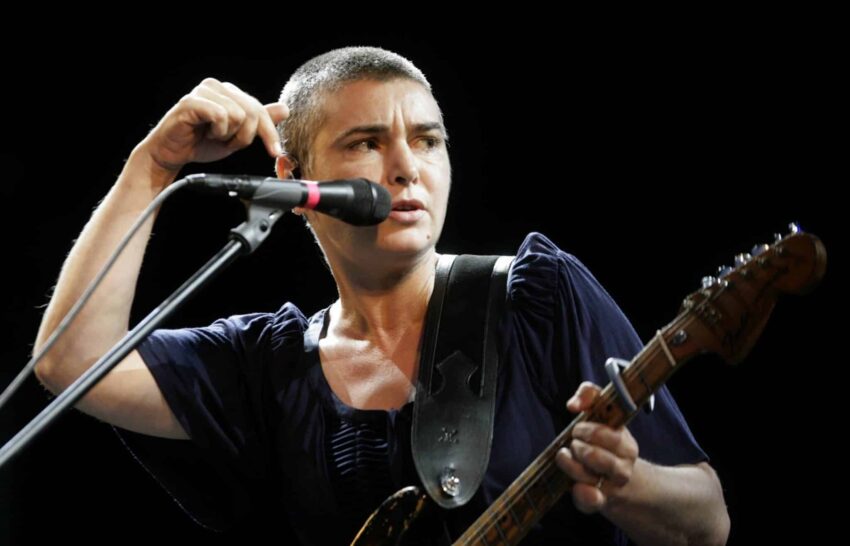
By Dallas McInerney
Sadly, for many, the Lord has called Sinead O’Connor from this Earth; through her artistry, indivisible from her advocacy, this daughter of Ireland amplified and stirred her generation the world over. Easily the most significant Irishwoman of her time, O’Connor could confound her fans and critics, who first came to encounter her voice then stayed glued to her life’s journey.
As the end of the 20th century approached, Ireland projected two musicians to the heights of global identity. Both readily swapped their artistic craft for statecraft, allowing themselves to be feted by the self-conscious, supra-elites of international society. First was Bob Geldolf, then Bono.
Geldolf evoked the scarred Irish psyche of famine and turned the world’s eye to the redolent African experience, convening history’s largest ever group therapy sessions via the Live Aid concerts, allowing millions to self-satisfyingly register concern.
Bono’s solution for the strife of Belfast was a world where the streets have no names, and by that he meant third world debt; its cancellation became his cause celebre and gained him entry into the halls of Congress, the arms of the UN leadership and polite cocktail parties on the Upper East Side.
But then came a third, Sinead, a cosmic force, who like Bono and Geldolf, could not be constrained by Ireland’s borders (cultural or geographic). However, her global propulsion wasn’t fuelled by socially conscious laments, perfected for transmission into middle class living rooms.
Sinead’s causes were personal, visceral, sometimes tragic, very Irish and yet universal: the damage a child carries from harmful rearing, the subjugation of women and unforgiving power structures that can suffocate and extinguish souls.
Two signposts in Sinead’s persona loom the largest. Neither are the most important in her life’s story, yet they bear reflection as we remember the gift of her life; in chronological order they are the 1990 release of her cathartic ballad, “Nothing Compares 2 U” and her provocative protest on Saturday Night Live where she tore into pieces a photograph of the Holy Father, John Paul II.
It is not widely known that O’Connor apologised to the Holy Father for any offence, explaining the incident was ‘a ridiculous act, the gesture of a girl rebel…’
First, the song: if the record companies were looking for the next saccharine, Irish chanteuse to satisfy the world’s easy listening radio stations, they would have to wait for Enya and her 11 versions of essentially the same song of ethereal whispering. Sinead was going to deliver what she wanted to world to hear and know, nothing else.
Prince might have written the tune, but Sinead internalised the art and made it her own. It remains one of the biggest records in pop music history, garnering global acclaim; one critic declared it the loveliest of love songs, and that’s true. However, to regard it as just a ballad would to leave eclipsed Sinead’s full genius, channelled through the performance is a vocal rendition conditioned by her life.
No other pop song has such a blended perfection of lament, love, pathos and verve. Once Sinead released “Nothing Compares 2 U,” it was impossible for Prince to claim it back in any artistic or proprietary way. It wasn’t just a song from an era, it helped define and explain its era.
Then came the photo incident, broadcast live on American television on 3 October 1992. It endures as a visual milestone of protest, with the cultural potency of the Chinese student blocking passage of a Communist tank in Tiananmen Square and the explosion of the Challenger Space Shuttle.
It is not widely known that O’Connor apologised to the Holy Father for any offence, explaining the incident was “a ridiculous act, the gesture of a girl rebel … I was in rebellion against the faith, but I was still within the faith,” though defiantly, she later said she would do it again; artistically, Sinead was unafraid.
Sinead was either a spiritual or cultural Catholic for much of her life, her early faith journey was classically Irish, attending a Dominican girls’ school in Dublin and later some time in a Magdalene asylum conducted by the Our Lady of Charity Order.
Adulthood, a rising social consciousness and some unforgivable practices inside the church meant she moved away from the faith, however she died a theist who maintained a wonder for the transcendent, often speaking of her adoration and awe of the Holy Trinity, late into her life.
As I listen to her songs and recall the best of her artistry, wading through her awesome back catalogue, it’s clear that much of her genius is borne from pain and trauma, and not just hers.
How do we honour that? As a performer, she asked for nothing in return and often got less; as fans, we can always give thanks and celebrate her many gifts, but it never seemed the ledger was ever meant to be in Sinead’s favour. Eternal rest grant unto her, O Lord.
